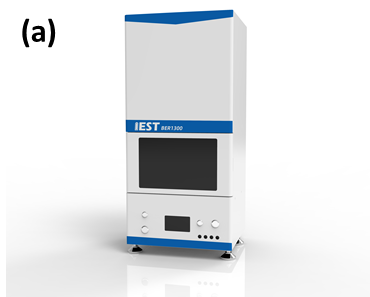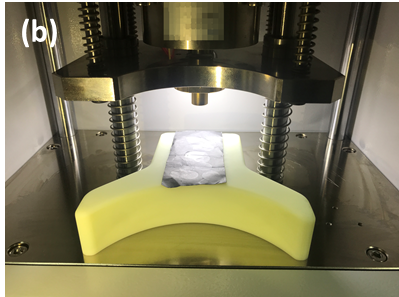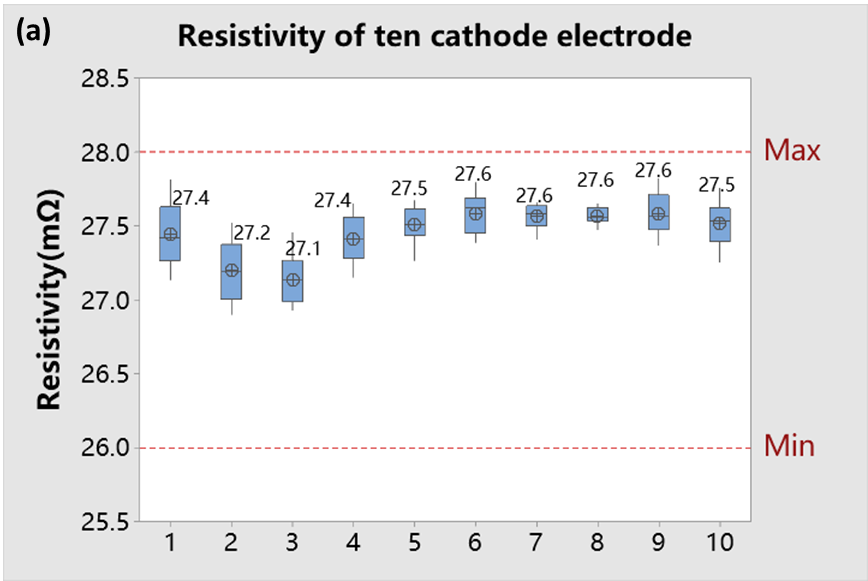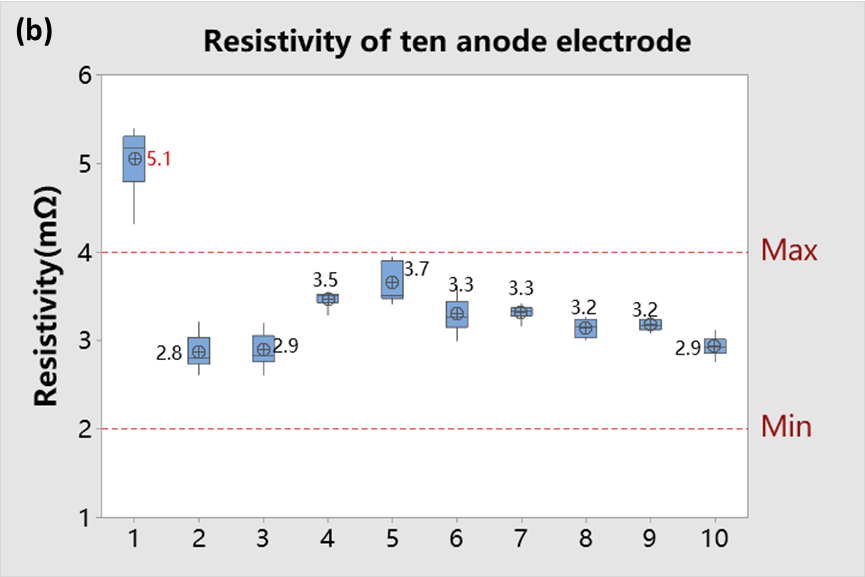Electrode Resistance Method to Evaluate the Stability of Electrode Batch
Electrode are an important part of lithium-ion batteries. The batch stability and uniformity of pole pieces affect the uniformity of lithium deintercalation and the uniformity of interface expansion thickness during charging and discharging of the battery on the one hand, and on the other hand, it will also affect the consistency of the mass production core. At present, two commonly used methods for monitoring the stability of the electrode process are: using in-situ online laser thickness measurement or non-in-situ height gauge to monitor the uniformity of the pole piece thickness and using the electrode post-punching weighing method to calculate the uniformity of the compaction density However, these two parameters cannot accurately represent the electrical performance of the electrode, nor can they be related to the positive and negative electrode materials, formula, porosity and other parameters. As an important electrical performance of the pole piece, the electrode resistance is affected by the pole piece. Thickness, electrode formula, electrode porosity, etc., so the difference in electrode resistance of different batches can fully characterize the batch stability of the pole piece. Choosing the electrode resistance method to evaluate the stability of electrode batches has the following important meanings:
1.Quickly evaluate the process stability of lithium-ion batteries and identify defective products in advance.
2.Optimize active materials, electrode formulas, and process parameters.
3.Assist R&D personnel to perform failure analysis of lithium-ion batteries and quickly locate key failure points.
This paper uses the electrode resistance test method to evaluate the resistance stability of the positive and negative electrode of different batches, and monitors the stability of the stirring, coating, and rolling processes by formulating the resistance specification range of qualified batches to speed up the production and R&D progress.
1.Experimental Equipment and Test Methods
1.1 Experimental Equipment: Electrode resistance meter, model BER1300 (IEST), electrode diameter 14mm, can apply pressure 5~60MPa. The equipment is shown in Figure 1(a) and 1(b).
 |  |
1.2 Test Methods: Cut the electrode sample to be tested into a rectangular size of about 5cm×10cm and place it on the sample stage. After setting the test pressure and pressure holding time on the MRMS software, start the test. The software will automatically read the electrode thickness, resistance, resistivity, conductivity and other data.
2.Data Analysis
Select 10 batches of rolled positive and negative electrode for pole piece resistance test, the data results are shown in Figure 2 (a) and 3 (b). Comparing the resistance data of the positive electrode, if the resistance specification range of this sample is 26~28mΩ through a large number of tests before, and the test results of the 10 batches this time are all within this range, indicating that the data is qualified, it can be considered that there is no abnormality in the uniformity of the electrode, and the process control is relatively stable. Comparing the negative electrode resistance data, if the resistance specification range of this sample is 2~4mΩ through a large number of tests before, and 9 of the 10 batches of test results this time were within the pass range. the result of 1 batch is greater than 4 mΩ, it can intercept abnormal batches, further combine SEM topography analysis, electrode density and other methods to investigate the cause of the high resistance, which may be caused by factors such as uneven mixing of the slurry, uneven coating, or poor parallelism between the rolls of the roll press.
 |
 |
Figure 2. (a) Positive electrode resistance after rolling 10 batches. (b) Negative electrode resistance after rolling 10 batches.
3.Summarize
Using the electrode resistance test method to evaluate the resistance stability of the positive and negative electrode of different batches can be monitored. In addition, the stability of the stirring, coating, and rolling processes can be monitored by formulating the resistance specification range of qualified batches to speed up production and research and development progress.
